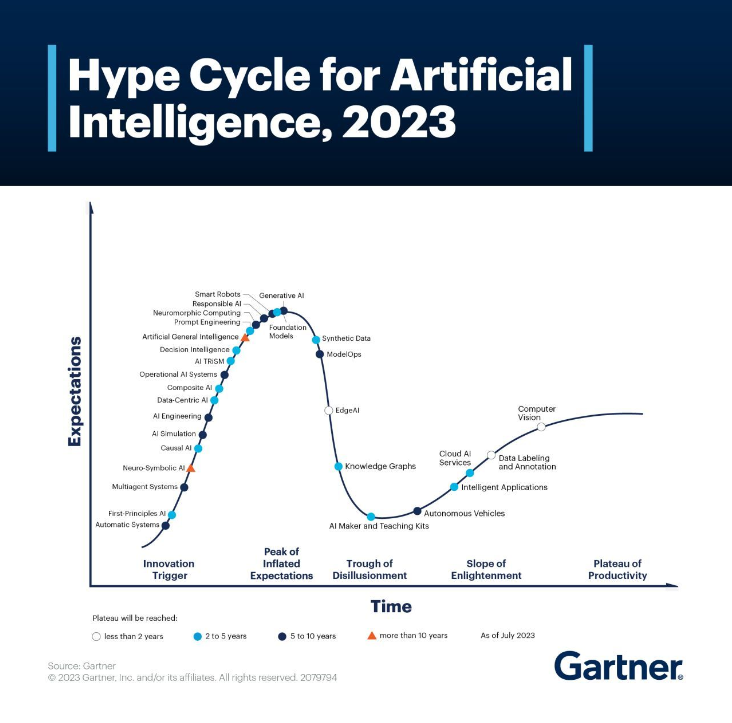Navigating the Hype Cycle of Artificial Intelligence: A Guide for Business Leaders
Ah, Artificial Intelligence. A term that sparks as much excitement as it does skepticism. From world-saving medical applications to apocalyptic robot uprisings, AI’s public image is nothing if not a rollercoaster. For every utopian vision, there’s a dystopian counter-narrative.

It’s enough to make any business leader wonder, ”Is investing in AI akin to betting on a unicorn, or is it a true workhorse for my business?”
In this post, we will demystify the AI hype cycle and provide actionable insights for executives considering an AI investment.
What is the Hype Cycle?
The ”Hype Cycle” is a model developed by Gartner, a leading research and advisory company. The cycle serves as a graphical representation of the maturity, adoption, and social application of specific technologies. It consists of five phases:
- Innovation Trigger: A new technology is born, triggering media buzz and early investment.
- Peak of Inflated Expectations: Publicity fuels over-enthusiasm and unrealistic expectations.
- Trough of Disillusionment: As initial implementations fail to deliver, disappointment sets in.
- Slope of Enlightenment: Businesses learn from their experiences and begin to understand the technology’s true potential.
- Plateau of Productivity: Mainstream adoption occurs, and the technology starts delivering consistent value.

Where is AI on the Hype Cycle?
AI is not a monolithic technology but a collection of sub-technologies like machine learning, natural language processing, and computer vision. While some of these have crossed the chasm to mainstream adoption (think chatbots in customer service), others are still in the earlier phases of the cycle.
The key takeaway for business leaders is to focus not on the hype surrounding AI as a whole, but rather on the specific AI technologies relevant to their industry.
Navigating the Hype: Tips for Business Leaders
- Understand Your Needs: Clearly identify the business problem you’re trying to solve. This will help you choose the right AI technology that has passed beyond the hype and into productivity.
- Consult Experts: The hype around AI is fueled by both its champions and its skeptics. Consulting experts can provide a balanced view and help assess the true capabilities and limitations of AI for your needs.
- Pilot Programs: Before fully committing, run pilot programs to validate the utility of the AI technology for your specific use-cases.
- Adapt and Learn: Be ready to adapt your strategies based on the results and insights gained during the implementation phase.
Conclusion
The journey through the AI hype cycle is fraught with peaks and valleys. However, with informed decision-making, businesses can navigate through the hype to harness the transformative potential of AI technologies.
By focusing on specific needs and keeping an eye on the maturation cycle, companies can make strategic investments that offer both immediate impact and long-term value.
So, whether you’re a wide-eyed enthusiast or a cautious skeptic, understanding the AI hype cycle will enable you to make investment decisions that are not just hype-worthy but also truly impactful.
Source: Gartner